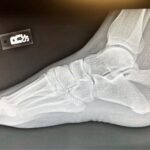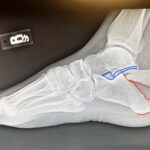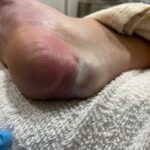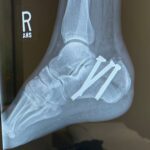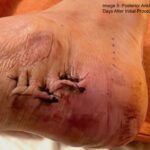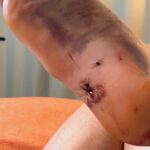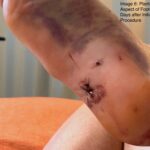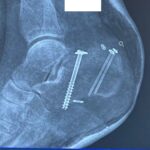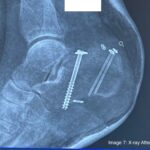Case Report of a Tongue-Type Calcaneal Fracture
ABSTRACT:
Calcaneus fractures make up only 2% of all fractures, and tongue-type calcaneus fractures represent 25-40% of all calcaneus fractures. While rare, tongue-type calcaneus fractures can put the superficial soft tissue at risk for necrosis and other complications, creating a surgical emergency. This case report describes the care of a patient who presented to a remote island critical-access emergency room after a fall from height. He described severe, sharp pain in the heel and was found to have tenting and blanching of the overlying skin near the injury. These findings suggested the soft tissues were at high risk for necrosis if not treated immediately. An X-ray confirmed a tongue-type calcaneus fracture. The patient was splinted in plantar flexion and transported by helicopter to a mainland hospital capable of performing the appropriate surgical reduction. The patient underwent open reduction internal fixation of the calcaneus, relieving pressure on the skin. He tolerated the procedure well, and there were no complications. He was discharged the day after surgery with outpatient follow-up. His case was prolonged and required multiple procedures to ultimately achieve appropriate healing. This case illustrates the importance of recognizing fractures presenting with skin involvement since surgical emergencies require prompt intervention to reduce the risk of serious complications such as open fracture from skin breakdown, poor healing, and a slow return to normal activities. It also emphasizes the importance of advocating for expedient patient care to increase the odds of a good outcome and ensure patients are given high-quality care.
Topics:
Calcaneus fracture, tongue-type calcaneus fracture, fall from height, axial loading, fracture complications, case report.

